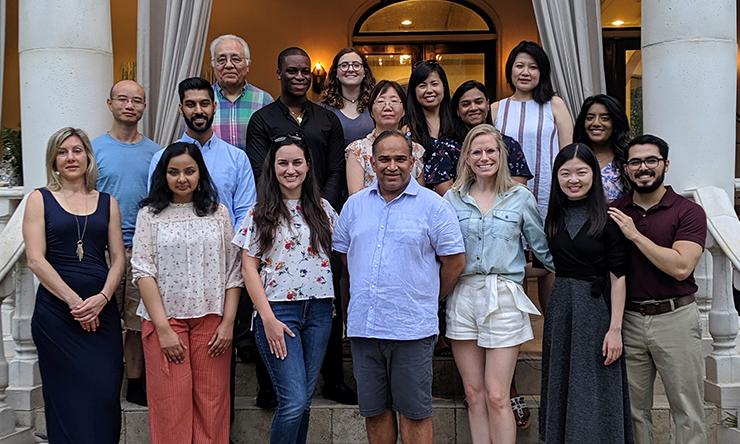
Swathi Balaji Lab
Collaborators of the Swathi Balaji and Sundeep Keswani Lab.
Collaboration
Drs. Swathi Balaji and Sundeep Keswani combine expertise in the laboratory.
About the Lab
Dermal scars are a major healthcare problem with detrimental physiological, cosmetic, psychosocial and economic impacts. Our research focuses on understanding the sequelae of fibrosis in response to dermal injuries in postnatal patients, with a particular emphasis on understanding why the response to similar injury vary drastically in different people, with some patients healing with minimal scarring, whereas others healing with excessive scars, underscoring the ‘heterogeneity in scarring propensities’ in different postnatal patients, and why scars remain forever once formed. We then comparatively assess the scarless wound healing mechanisms of the fetal regenerative response, to ultimately recapitulate the scarless phenotype in adult healing and impact clinical care of patients.
Ongoing work in our lab is focused on understanding cellular and molecular mechanisms governing variability in scar formation in inflamed tissues in different subsets of population. Specifically, the mechano-regulation of inflammation, extracellular matrix and fibroblast functional phenotype that results in a spectrum of tissue fibrosis outcomes. We utilize basic science and translational research approaches to develop multi organ models of tissue fibrosis affecting humans, with the ultimate goal to develop novel bioengineered therapies to achieve regenerative tissue repair.
Another project in our lab focuses on understanding the differences underlying energy metabolism in dermal fibroblasts. Genes regulating the metabolic pathways play key roles in wound healing and development of fibrosis. Therefore, defining the metabolic phenotype and energy demands of fibroblasts may provide key insights into how microenvironment at the site of injury can be modulated. We are currently focused on studying mitochondrial oxidative phosphorylation and glycolysis in naïve fibroblasts and reformed scar fibroblasts after injury. Studying these pathways will throw light on novel targets towards development of better therapies.
One of our goals is to elucidate the fibroblast signaling mechanisms that communicate and regulate the fibrogenic phenotype. We sought to investigate the nature of pro-fibrotic intercellular events and noted that extracellular vesicles or exosomes can commute cell-to-cell communications under homeostatic and pathologic conditions. Because the pathophysiology of exosomes in normal skin repair and fibrosis is still not known, one of our goals is to study the role of exosomes in the mechanisms that control fibroblast interactions to contribute to scar heterogeneity and perpetuation.
Our accomplishments over the years stem from being a part of world-renowned and active Bioengineering and fetal surgery centers with top-tier research training curricula. We believe that studying exosomes as biomarkers and/or targeted therapeutics to regulate fibroblast phenotype and, therefore, heterogeneity in human scarring and scar persistence represents a new paradigm that could result in personalized precision medicine.








 Credit
Credit
